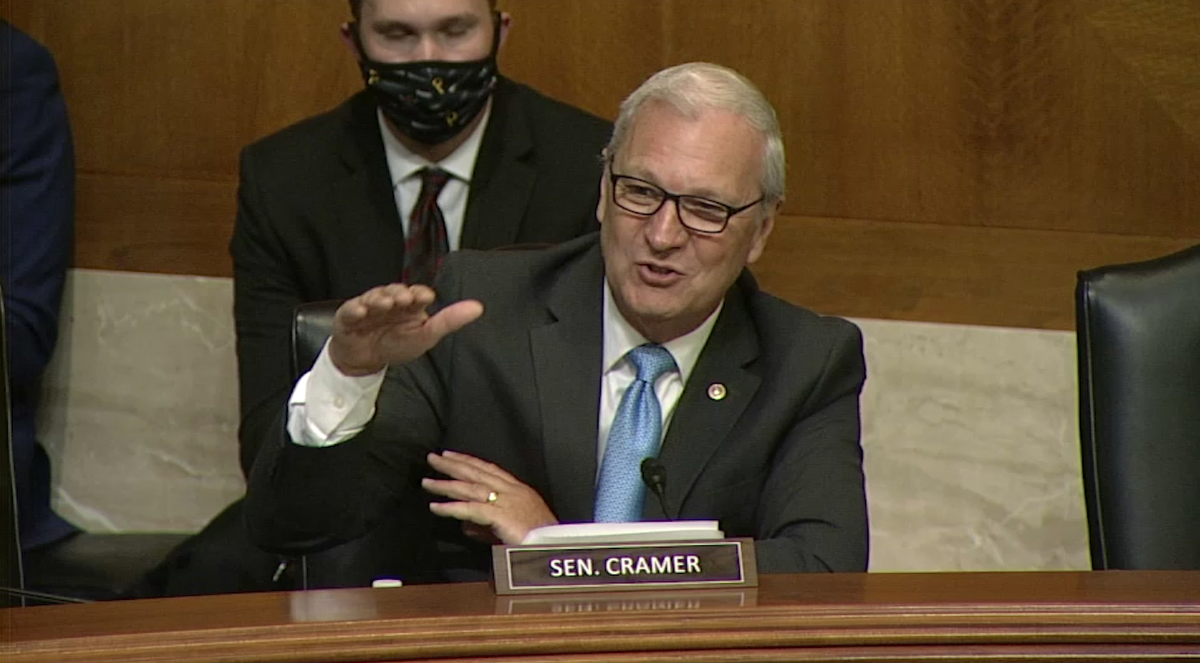Source: United States Senator Kevin Cramer (R-ND)
WASHINGTON – At a Senate Environment and Public Works (EPW) Committee hearing this week, U.S. Senator Kevin Cramer (R-ND), Ranking Member of the EPW Transportation and Infrastructure Subcommittee, spoke with National Wildlife Federation President and CEO Collin O’Mara and the Larson Strategies Principal Amy Larson about water supply management issues, using as an example the U.S. Army Corps of Engineers’ management of the Snake Creek embankment in North Dakota during the recent drought in the state.
“The Snake Creek embankment was constructed by the Corps of Engineers at the edge Lake Sakakawea, which is a part of the Missouri River system created by the Garrison Dam. The embankment creates a separate pool of water known as Lake Audubon, and that can be kept at a higher elevation so the Bureau of Reclamation can manage the water for its intended uses such as irrigation, municipal water supplies, rural water, and the Lake Audubon Wildlife Refuge,” explained Senator Cramer.
“A few years ago, the Corps realized they were experiencing some foundation problems with the embankment. The relief wells they put in place were not properly maintained over the years, and rather than getting to the root of the problem, and despite local objections – which were loud – the Corps decided to implement a Water Control Plan that would limit how much higher the water level in Audubon could be. In a severe drought like we’re going through this year, it can starve our largest city’s water supply. It certainly hurts the shores of the Wildlife Refuge, and it misses every priority. When this was brought to my attention, the Corps simply said they couldn’t account for the water supply, irrigation, or needs of the federal agencies in determining the importance of the project, even though the end users were the main reason the embankment was built in the first place!” said Senator Cramer. “As we start working on another [Water Resources Development Act] bill, what’s the best way for the Corps to include issues like water supply and irrigation as they prioritize project decisions?”
“I think this is another example of why we need a broader benefit-cost analysis,” replied Mr. O’Mara. “I’d like to see the impacts on the ecosystem actually accounted for in a major way. The loss of the hunting and fishing revenue that comes from that part of the state that won’t be there if it’s dry. We would like to work with you on this. It’s replicated all across the country. Frankly, if you had a bunch of McMansions that were worth $3 million apiece lining the shore, you would qualify better than this amazing habitat that is one of the most important in the country.”
“There are so many regional priorities. The upper Missouri basin states have different priorities than the southeast or say the reservoirs in Oklahoma and Texas. And western water issues have their own character as well,” said Mrs. Larson. “This particular issue needs to strikes the balance between consistency on these rules and flexibility to address local conditions.”
“I want you to know, Senator Capito and Senator Carper and the team, that I asked the very direct, specific question: ‘Does the unanimously passed EPW surface transportation bill still serve as the foundation, every word of it?’ And they assure me that it still is.”
